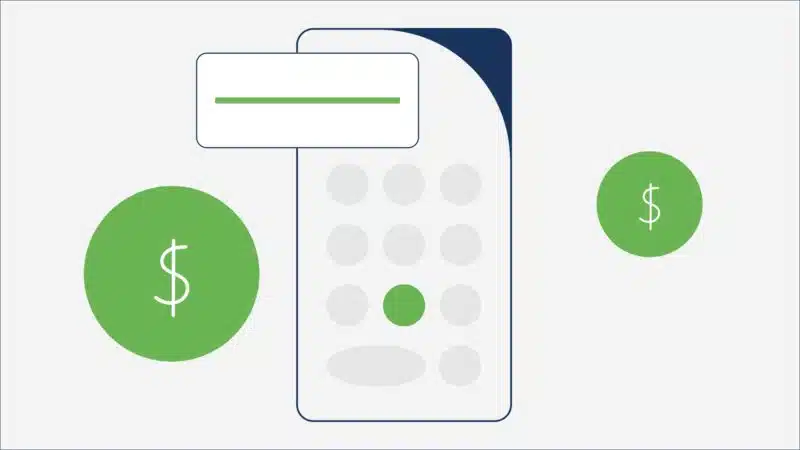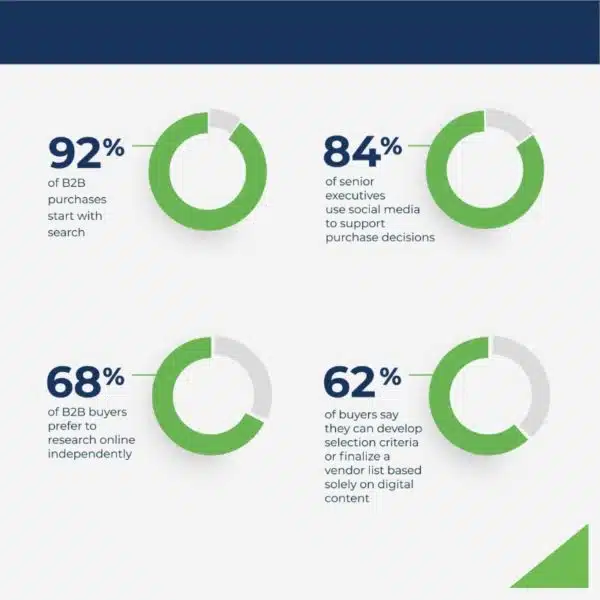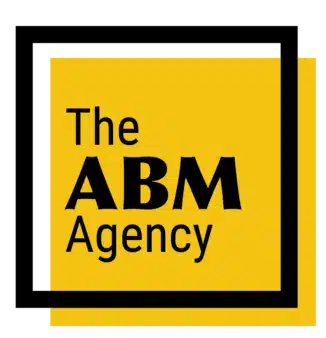Opinions expressed in this article are those of the sponsor. Search Engine Land neither confirms nor disputes any of the conclusions presented below.
You’re interested in ABM but what will it cost?
How to think about, price out and allocate wisely when budgeting for ABM campaigns designed to turn data into dollars.

You’ve heard about the results companies are getting with account-based marketing (ABM) and you want to know what it will take to make it work for you. In particular, will it fit in your budget?
Like any digital marketing campaign, the cost of running ABM campaigns consists of multiple components with multiple line items within each component. ABM components include your tech stack, assets, channels, and the expertise to execute and orchestrate everything. What can you expect to spend on each? What variables come into play? What kind of return can you expect from your investment?
Let’s break it all down.
How to think about ABM budgets
You may have seen the Forrester report that found the average annual ABM budget is around $350,000 (excluding headcount costs) and pilot campaigns around $200,000. It found more mature programs with proven value have budgets of around $600,000, and budgets for established programs at large enterprises can run into the millions.
While these averages are a good jumping-off point, smaller organizations shouldn’t be put off by the price tag before learning more, and corporations of any size should keep in mind these findings may have already changed. Forrester found that 70 percent of organizations expected the average cost to rise.
The best way to think about ABM budgets is to understand its components, your ICP priorities, and the right budgeting methodology.
Start by understanding ABM components
Tools, processes, and people — like any digital endeavor, you need all three to run ABM campaigns. ABM components include:
- Strategy development
- Tech stack
- Asset creation
- Paid ad channels
- Expertise to run campaigns and analyze results
The number of accounts and individuals within those accounts you want to target also drives your budget.
Determine the relative importance of insight and engagement
Are you primarily looking for insight or engagement from your ideal client persona (ICP)?
If you want to better understand your visitors’ intent and pain points, you’ll want to allocate more of your budget for insight. You’ll use this information to create targeted ICP content and give your team the perspective to make informed campaign choices.
On the other hand, if your targeted ICP is within the same industry or niche, you’ll want to allocate more of your budget for engagement because the insight provided will be similar for all accounts within your ICP.
Use the right budgeting methodology
You can use the same budgeting approach for an ABM pilot or 1:Many ABM campaign as you would for a traditional digital marketing campaign, but budgeting for 1:Few and 1:1 campaigns is more complicated and fluid.
Personalized ABM campaigns focus on targeting individuals within accounts — the cost is determined by account value and not a fixed budget. The more valuable a particular account, the more you’ll want to spend on it. Account values often reveal themselves during the campaign, so you’ll want to use an account-based methodology with more flexible line items.
How to price out technology and expertise
While the actual dollar costs of targeting specific accounts and individuals are too variable to cover here, we can quantify the cost of technology and expertise.
Budget for the tech stack you need
You’ll need to subscribe to a few key platforms to run ABM. The cost of your combined tech stack is based on the size of your organization and the platforms you choose — you can expect to pay $165-$325K in total for the annual licenses needed to run ABM.

Budget for the channels you need
Targeting accounts with the right messages at the right time means you have to get your assets in the right channels. ABM channels include programmatic, content marketing, paid search, SEO, paid social, email nurture, and online gifting. The total cost for each channel includes creating the assets and running them in the channel.
While spending for each channel is highly variable by campaign, determining an overall paid-ad budget is part of your campaign strategy.
It’s best to stay flexible with specific allocations so you can spend more on the channels that are proving to be more successful as your campaign progresses and less on the ones that aren’t.
Budget for the expertise you need
You can use the right tech stack and channels for your ICP, but it’s tough to get the right ROI without the right team. You need:
- Tech stack integration specialists: Connect all platforms so they work together and convert data into dashboard visualizations everyone can understand.
- Analysts and strategists: Translate ongoing campaign data into actionable tactics that ensure you’re targeting accounts most likely to convert.
- Content writers and designers: Develop display ads, white papers, case studies, landing pages, and personalized assets for 1:Few and 1:1 campaigns.
- Search marketers: Convert complex marketing plans and research into SEO and PPC strategies that get ads in front of buying committees at every funnel stage.
Remember to keep turnover in mind. Marketing specialists have a 19.8% annual turnover rate.
How omnichannel impacts ABM budgeting
Much more of the buying process and B2B marketing is taking place online now — the pandemic changed how the world does business. B2B marketers who embrace the change are reaching accounts where they’re already hanging out.
Omnichannel changes how buying committees make decisions
The new B2B buying journey doesn’t include a lot of talking with suppliers. Most of it happens online before buyers reach out and includes more people on the buying committee.
In 2017, you could engage in buying scenarios by targeting one or two buyers. Now, buying committees with two people represent only 18% of purchases while most have five or more people. These people are looking for solutions online and increasingly find them in social channels — B2B social sellers outperform their peers who don’t leverage social media by 72%.

Why omnichannel ABM requires insight
To know which channels will work best, you need to apply ABM insight.
For example, if you advertise on LinkedIn but the accounts within your ICP are more active on Facebook, your ads aren’t likely reaching your intended audience. By applying insight using an omnichannel approach, you ensure your ICP will see your ads while enabling you to target specific pain points. This dramatically increases the likelihood your ICP will follow your ad to your website.
How to optimize omnichannel ABM
More personalized ABM campaigns work better. The data prove it — 1:Few and 1:1 ABM campaigns deliver much higher ROI because they move accounts further down the funnel faster.
As you might guess, personalized ABM campaigns cost more because you need to create and orchestrate personalized assets. But if it’s ROI you’re after, the investment pays off. Make sure to be strategic during account selection and focus your budget on running campaigns that only target high-value, in-market accounts.
ABM investment strategies
While the bottom-line number for an ABM program deserves thoughtful consideration, keep revenue generation in mind as you deliberate. To realize the promise of ABM, look at all of your options and allow the strategy to play out once you start.
Patience is a must
The B2B buying process takes many months or even a year or more to move a buying committee from awareness through decision. The first ROI benchmark for ABM is usually around month six — by then, if you’ve invested wisely and your sales team is leveraging campaign data correctly, you should be seeing a return of three times your investment.
The agency alternative
The most sophisticated ABM agencies run full-funnel ABM campaigns that include sales enablement as part of their services. These agencies earn their clients up to nine times annual ROI for 1:Few and 1:1 campaigns starting with the first campaign because they already have the teams, technology, and orchestration expertise.
Agency results can be replicated in-house over time as you build the right team and a seamless operation. Consider comparing the budget you develop to the cost of partnering with an ABM agency by requesting demos from one of more agencies.
Ways to reduce in-house costs
There are a few things you can do to reduce the cost of running AMB in-house. The key is informed decision-making and careful planning:
- Research your tech stack options so you choose the ones that match your needs the first time
- Consider your data goals to cut back on costs associated with trying different products
- Have the right team in place before you start
- Establish SOPs to avoid obstacles
As you’ve seen, budgeting for ABM is complex but you can get accurate numbers when you understand what’s involved and apply a lot of forethought. Reaching out to peers and experts about their hands-on experiences with ABM budgeting is always a good idea, as is giving equal focus to the other side of your balance sheet as you make your allocation decisions.
Related stories
